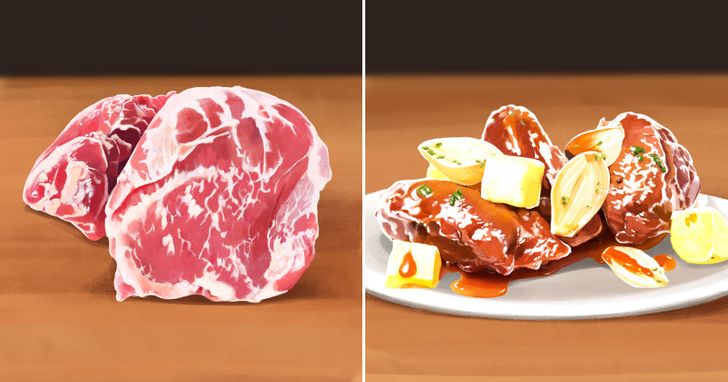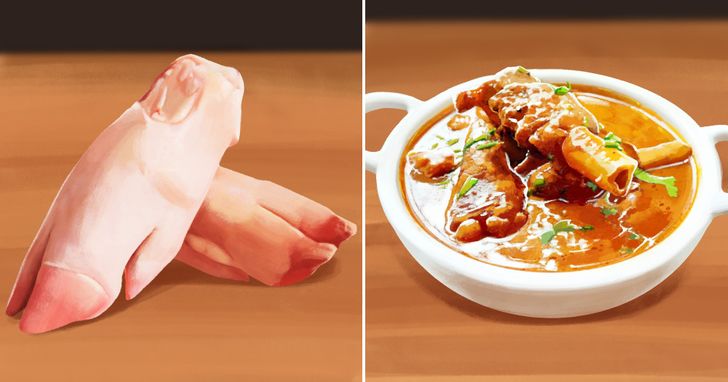Different Pork Cuts, and How to Cook Them
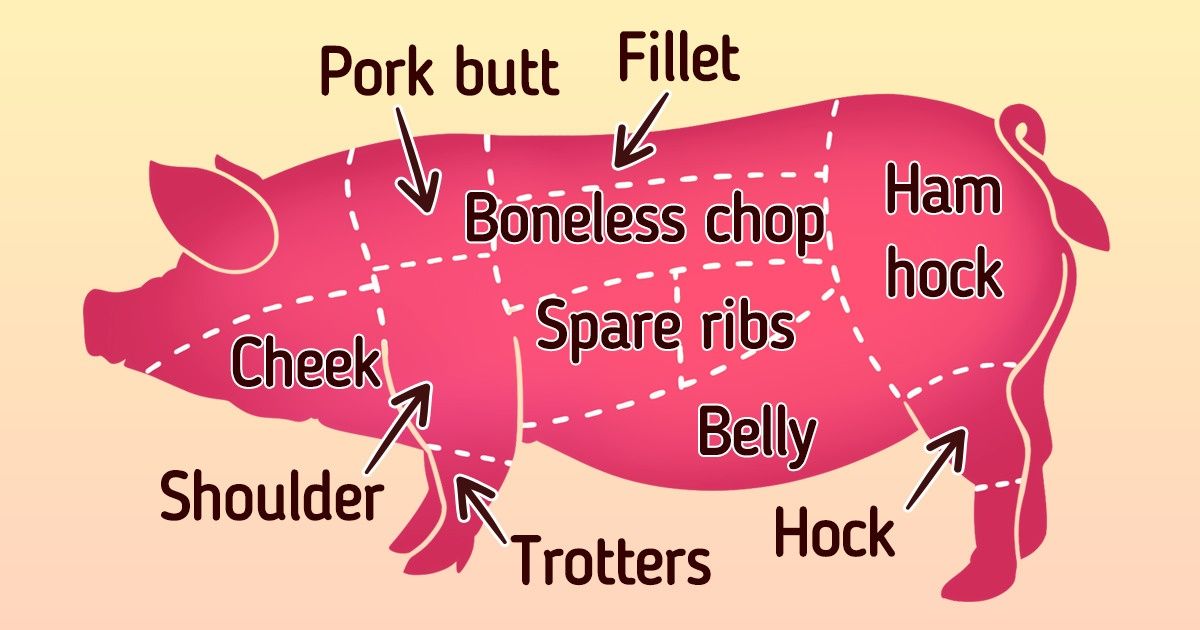
How you cook it is not the only thing that makes meat soft, juicy, and delicious. The other important factor is the meat cut that you use.
5-Minute Crafts would like to tell you about different pork cuts and how to cook them correctly.
Main pork cuts
The most common pork cuts are:
- Fillet, or the tenderloin that comes from the top side of the pig.
- Boneless pork chop comes from the loin area which stretches from the pork shoulder to the rump.
- Spare ribs are located down the side of the pig and reach right down toward the lower rib cage.
- Baby back ribs come from the highest part of the pig’s back.
- Pork belly comes from the fleshy underside of the pig.
- Ham hock comes from the rear leg of the pig.
- Hock comes from the lower shank of the leg.
- Pork shoulder comes from the top of the leg down to the front trotter. It consists of pork butt and picnic shoulder.
- Cheek comes from the cheek area of the pig.
- Trotters are the hooves and sometimes knuckles of the pig.
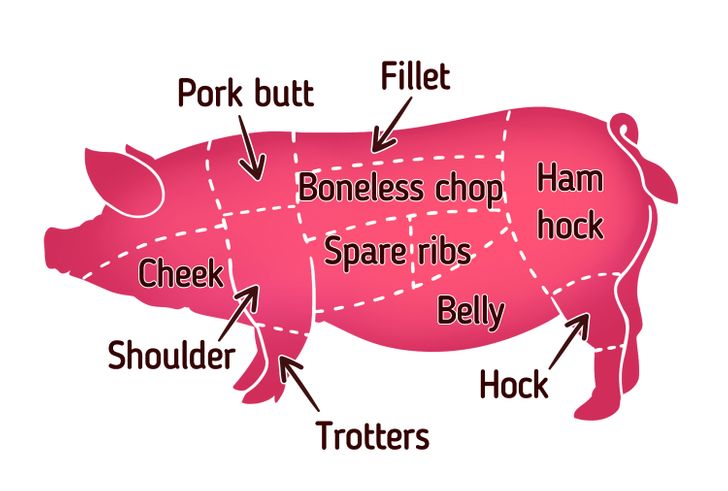
More detailed information about each cut
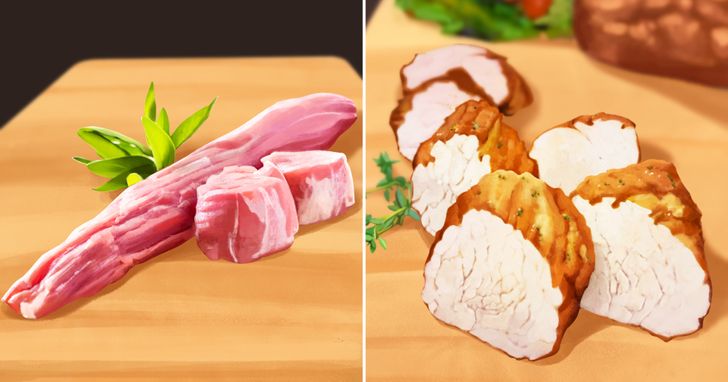
1. Fillet (tenderloin)
Pork tenderloin is one of the main cuts which comes from the upper back of the pig. It has very lean meat with a small amount of connective tissue.
How to cook: Due to the fact that the meat is low in fat and boneless, it’s very easy to make it dried out and chewy. In order to preserve the flavor and texture of the meat, it’s best to quickly fry or bake it.
This lean meat tastes good even when cooked without additional seasoning.
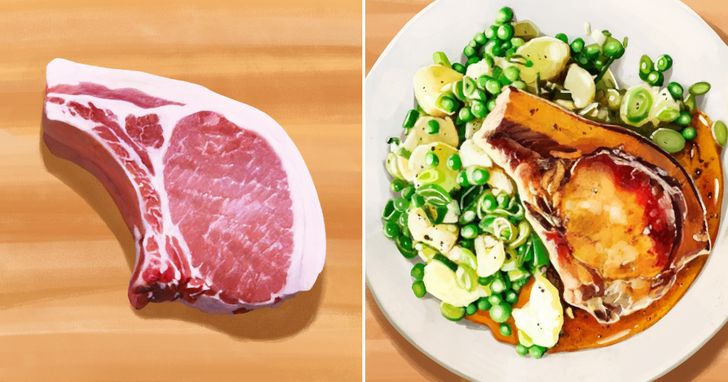
2. Boneless pork chop
The meat that comes from the area that stretches from the pork shoulder to the rump is one of the most tender cuts. It can be cut into large pieces, chops, or medallions.
Since this type of meat is relatively lean, it’s recommended to choose pork chops on the bone so that they remain juicy during cooking and don’t dry out.
How to cook: To prevent the meat from drying out, it’s best to use rapid cooking methods. You can pan, grill, bake, or barbecue a pork chop.
This meat cut goes well with a variety of seasonings. You can use tomatoes, garlic, or mushrooms, add lemon, rosemary, thyme, or Asian spices to it.
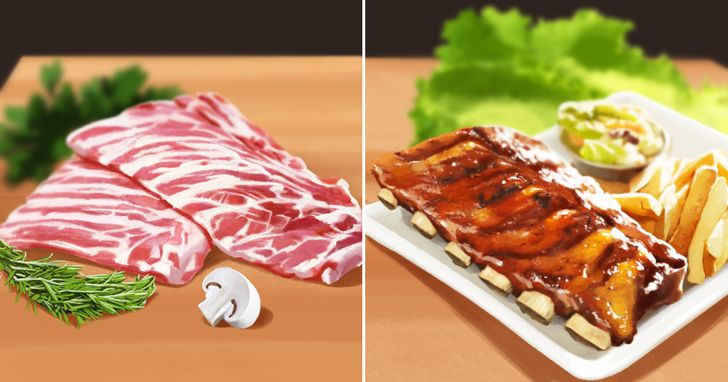
3. Spare ribs
This cut is located down the side of the pig and reaches right down toward the breastbone of the animal. The ribs there have a neat rectangular shape, they’re flatter and straighter compared to the rest of the ribs. There’s not much meat on them, but quite a lot of connective tissue and fat.
How to cook: To make the ribs tender, cook them over low heat. Cooking methods such as grilling, braising, smoking, and slow roasting are good enough.
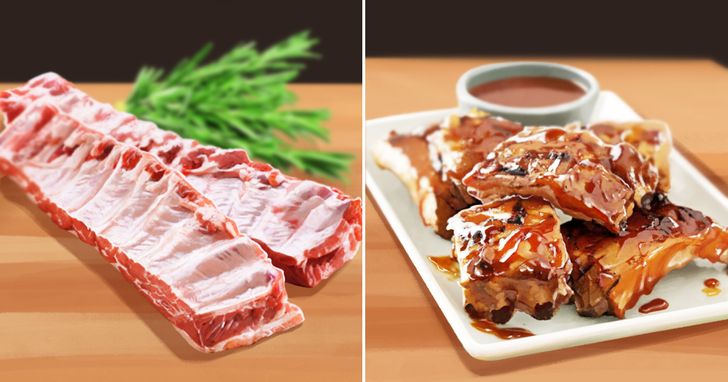
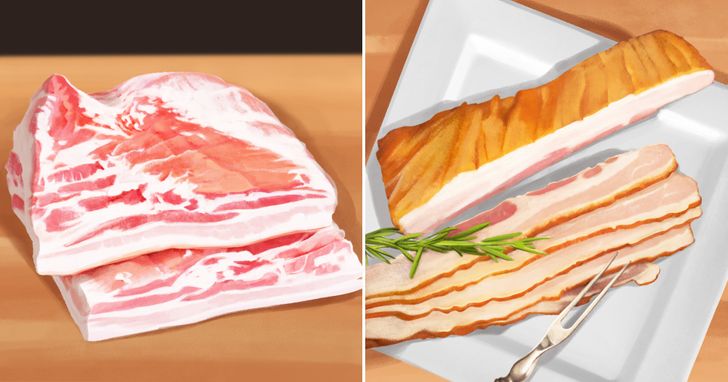
5. Pork belly
The cut is made from the fleshy underside of the pig, and contains a large amount of fat interspersed with thin layers of muscle. It’s the fattiest meat and is the basis for making bacon.
How to cook: You can roast, cure, smoke, or braise the belly to keep the meat juicy. The belly is also great for oven baking and barbecuing.
Dishes made from this pork cut go well with starchy foods such as bread, rice, noodles, and potatoes.
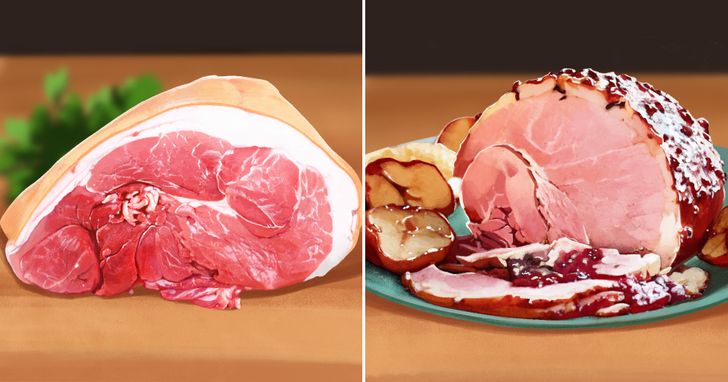
6. Ham hock
This meat comes from the rear leg of the pig. It contains a large amount of connective tissue and bones.
How to cook: The meat from the rear leg has a lot of muscles that used to work a lot, so it’s better to use slow braising or roasting to cook it properly. To keep the meat juicy, you can cook it with a lot of moisture, for example in a broth.
To make ham, the hock can be salted, dried, or smoked. You can also cut the hock into steaks and fry them in a pan or grill them.
The ham hock is the source for prosciutto in Italian cuisine, and jamón serrano in Spanish cuisine.
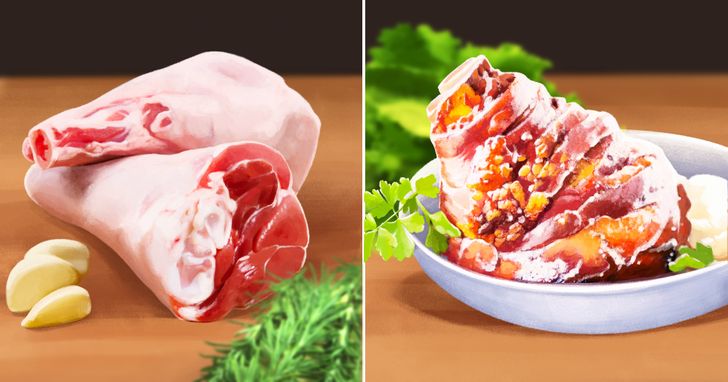
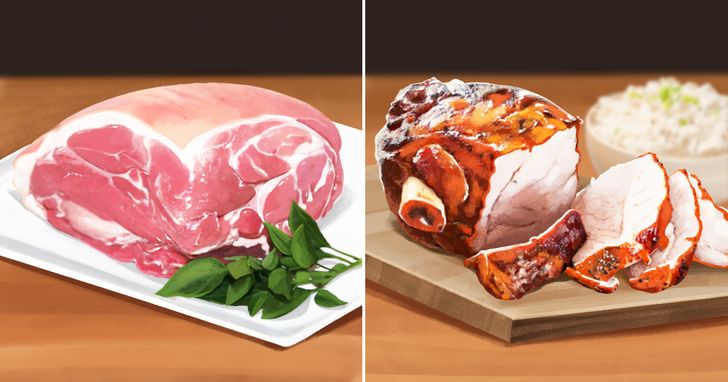
8. Shoulder (pork butt and picnic shoulder)
This is the part behind the head, at the top of the leg down to the front trotter. This meat contains a lot of fat and connective tissue. Usually, this large cut is divided into smaller ones: picnic shoulder and pork butt. The meat of pork butt is thicker with more fat marbling. Picnic shoulder is less tender and more marbled than pork butt, although it’s still quite fatty.
How to cook: Pork shoulder can be stewed, roasted over low heat (including barbecuing), used for minced meat and sausages.
